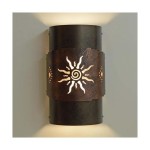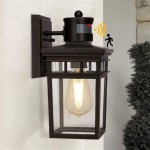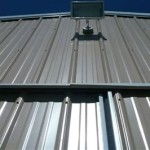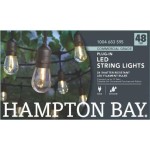How To Install Outdoor Low Voltage Landscape Lighting
Outdoor low voltage landscape lighting offers a practical and aesthetically pleasing way to enhance the security, curb appeal, and functionality of a property. Compared to high voltage systems, low voltage lighting is generally safer and easier to install, making it a popular choice for homeowners and landscaping professionals alike. This article provides a comprehensive guide on how to install outdoor low voltage landscape lighting, covering essential planning, material selection, and installation procedures.
Before commencing any installation, a thorough assessment of the property and the desired lighting effects are crucial. Consider the areas that require illumination, such as walkways, driveways, gardens, and architectural features. Determine the specific purposes of the lighting, whether it be for security, accentuation, or general ambiance. This initial planning phase will significantly influence the selection of lighting fixtures and their placement.
Begin by creating a landscape lighting plan. This plan serves as a visual representation of the project and helps in accurately determining the required materials and cable lengths. Sketch the layout of the property and mark the locations where each light fixture will be installed. Consider the beam spread and light intensity of each fixture to ensure optimal coverage and prevent over-illumination or dark spots. The plan should also indicate the location of the transformer and any necessary wiring runs.
Once the plan is finalized, calculate the total wattage required for the entire system. This is a critical step in selecting an appropriately sized transformer. Add up the wattage of each individual light fixture. The transformer should have a wattage rating that exceeds the total wattage of the lights by at least 20% to account for voltage drop and allow for future expansion. Overloading the transformer can lead to premature failure and potential safety hazards.
Selecting the Right Materials and Tools
Choosing the correct materials is essential for a durable and reliable landscape lighting system. This includes selecting appropriate light fixtures, low voltage cable, a transformer, connectors, and other necessary hardware. Consider the environmental conditions and aesthetic preferences when making these selections.
Light Fixtures: A wide variety of low voltage landscape lighting fixtures are available, including spotlights, floodlights, path lights, well lights, and deck lights. Each type of fixture is designed for a specific purpose. Spotlights are ideal for highlighting architectural features or trees, while path lights are used to illuminate walkways and driveways. Well lights are recessed into the ground and provide uplighting without being obtrusive. Choose fixtures that are constructed from durable materials such as brass, copper, or powder-coated aluminum to withstand outdoor elements. LED fixtures are highly recommended for their energy efficiency, long lifespan, and low maintenance requirements.
Low Voltage Cable: Low voltage cable is used to connect the transformer to the light fixtures. It is typically available in 12-gauge, 14-gauge, and 16-gauge sizes. The appropriate gauge depends on the total wattage of the lighting system and the distance between the transformer and the farthest light fixture. Refer to a voltage drop chart to determine the correct gauge for the specific application. Direct burial cable, which is designed to be buried underground without conduit, is the preferred type for landscape lighting installations. Ensure the cable is rated for outdoor use and is UV-resistant.
Transformer: The transformer converts standard household voltage (120V) to low voltage (12V or 15V). It is a crucial component of the low voltage lighting system. Choose a transformer with a wattage rating that exceeds the total wattage of the lights by at least 20%. Transformers are available in various sizes and configurations, including plug-in, hardwired, and timer-controlled models. Select a transformer that is suitable for outdoor use and is equipped with safety features such as overload protection and short-circuit protection. Consider a transformer with a built-in timer or photocell for automatic operation.
Connectors: Waterproof connectors are essential for making secure and reliable electrical connections between the low voltage cable and the light fixtures. Avoid using wire nuts or electrical tape, as they are not designed for outdoor use and can corrode over time. Use connectors that are specifically designed for low voltage landscape lighting applications, such as gel-filled connectors or crimp connectors with heat-shrink tubing. These connectors provide a watertight seal and prevent moisture from entering the connections.
Tools: The following tools are typically required for installing outdoor low voltage landscape lighting: a shovel or trenching tool, wire cutters, wire strippers, a crimping tool, a multimeter, a screwdriver, a drill, and safety glasses. A voltage tester is also recommended to ensure that the power is disconnected before working on any electrical components.
Installation Procedures: Step-by-Step Guide
Following a systematic approach during the installation process is crucial for ensuring a safe and effective landscape lighting system. This includes preparing the site, installing the transformer, running the low voltage cable, connecting the light fixtures, and testing the system.
Site Preparation: Begin by clearing the area where the lights will be installed. Remove any debris, rocks, or vegetation that could interfere with the installation process. Mark the locations of the light fixtures and the cable runs. If necessary, use a shovel or trenching tool to dig shallow trenches for the low voltage cable. The depth of the trenches should be at least 6 inches to protect the cable from damage.
Transformer Installation: Choose a suitable location for the transformer that is close to a GFCI-protected electrical outlet. The transformer should be mounted on a wall or post at least 12 inches above the ground to prevent water damage. If using a plug-in transformer, simply plug it into the GFCI outlet. If using a hardwired transformer, consult with a qualified electrician to ensure proper installation and compliance with local electrical codes. Connect the low voltage cable to the transformer according to the manufacturer's instructions. Ensure that the connections are secure and waterproof.
Cable Installation: Run the low voltage cable from the transformer to each light fixture location. Bury the cable in the trenches, following the landscape lighting plan. Leave sufficient slack in the cable at each fixture location to allow for easy connection and maintenance. Avoid running the cable across areas where it could be damaged by lawnmowers or foot traffic. If necessary, use conduit to protect the cable in these areas. Secure the cable with landscape staples or cable clips to prevent it from moving or becoming exposed.
Light Fixture Connection: Connect the light fixtures to the low voltage cable using waterproof connectors. Strip the insulation from the ends of the cable and the fixture wires. Insert the wires into the connector and crimp it tightly using a crimping tool. Alternatively, use gel-filled connectors by inserting the wires into the connector and twisting the cap until it is tightly sealed. Ensure that the connections are secure and waterproof to prevent corrosion and electrical problems. Test each connection with a multimeter to verify continuity before burying the cable.
Testing and Adjustments: After connecting all the light fixtures, turn on the transformer and test the system. Check each light fixture to ensure that it is working properly. Use a multimeter to measure the voltage at each fixture to verify that it is within the acceptable range. Adjust the aiming and positioning of the light fixtures to achieve the desired lighting effects. Fine-tune the system by adjusting the brightness and color temperature of the lights, if applicable. Once the system is tested and adjusted, bury the cable and backfill the trenches.
Maintaining Your Landscape Lighting System
Regular maintenance is essential for ensuring the longevity and performance of the landscape lighting system. This includes cleaning the fixtures, checking the connections, and replacing bulbs or LEDs as needed. A well-maintained system will provide years of reliable service and enhance the beauty of the property.
Cleaning: Periodically clean the light fixtures to remove dirt, debris, and insect nests. Use a soft cloth and mild soap to clean the lenses and housings of the fixtures. Avoid using harsh chemicals or abrasive cleaners, as they can damage the finish of the fixtures. Cleaning the fixtures will improve their light output and prevent corrosion.
Connections: Inspect the connections regularly to ensure that they are secure and waterproof. Check for signs of corrosion or damage. Replace any damaged connectors or cables to prevent electrical problems. Use dielectric grease on the connections to prevent corrosion and improve conductivity.
Bulb/LED Replacement: Replace bulbs or LEDs as they burn out. LED fixtures have a significantly longer lifespan than traditional halogen or incandescent bulbs, but they will eventually need to be replaced. When replacing bulbs, use the correct wattage and voltage rating to prevent damage to the fixtures or the transformer. Consider upgrading to energy-efficient LED bulbs to reduce energy consumption and prolong the lifespan of the fixtures.
Transformer Maintenance: Check the transformer periodically to ensure that it is operating properly. Inspect the wiring and connections to ensure that they are secure. Clean the transformer housing to remove dust and debris. If the transformer has a built-in timer or photocell, check the settings to ensure that they are accurate.
By following these steps and taking the necessary precautions, anyone can successfully install outdoor low voltage landscape lighting and transform their property into a beautifully illuminated and secure environment. Remember to prioritize safety and consult with a qualified electrician if you are not comfortable working with electrical components.

How To Install Low Voltage Outdoor Landscape Lighting 1000bulbs Blog

How To Install Low Voltage Outdoor Landscape Lighting The Garden Glove

Outdoor Low Voltage Lighting Diy Family Handyman

The Easiest Way To Install Low Voltage Landscape Lighting Abby Organizes

3 Must Haves For Installing Low Voltage Landscape Lighting Ideas Advice Lamps Plus

How To Install And Wire Low Voltage Outdoor Landscape Lighting

How To Install Low Voltage Outdoor Landscape Lighting The Garden Glove

How To Install Low Voltage Outdoor Landscape Lighting 1000bulbs Blog

The Easiest Way To Install Low Voltage Landscape Lighting Abby Organizes

How To Install Landscape Lighting True Value
Related Posts







